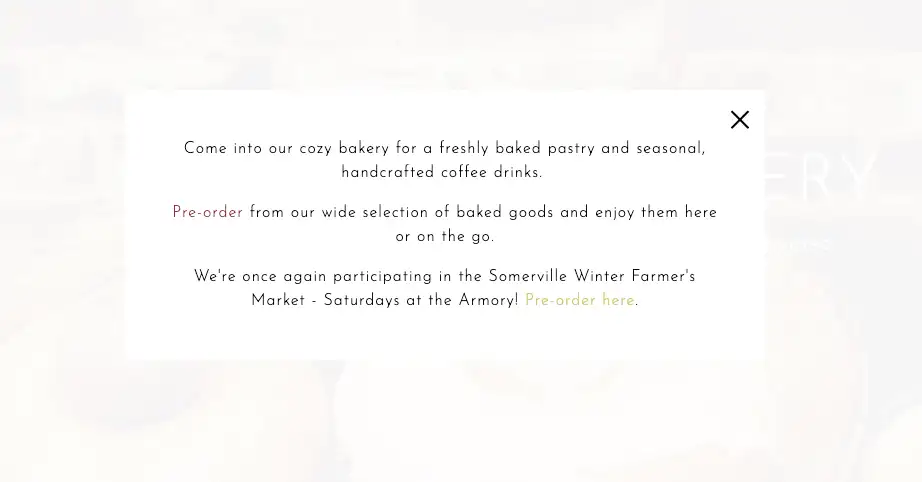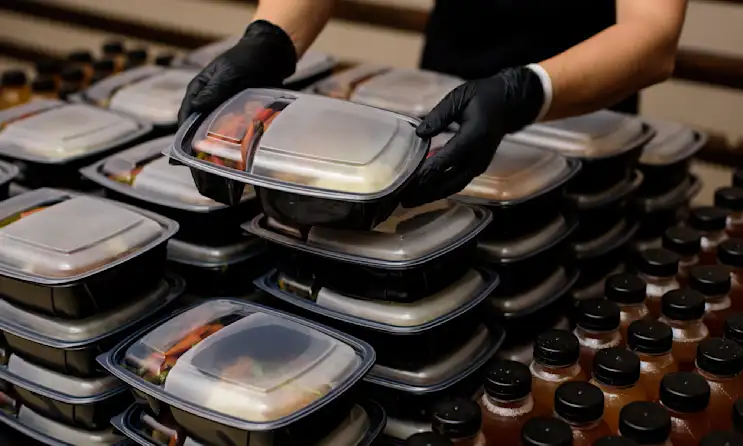Operations
What Restaurants Need to Know About Cottage Food Laws
Should restaurants sell food made at home?
In the last thirty years, a small-scale revolution in food production has swept the United States. As commercial food preparation by independent, home-based micro-producers has become part of the culinary landscape, a body of regulation known as “cottage food laws” has entered the legal code of nearly every state.
Descended from the farm-to-table and locavore movements, cottage foods epitomize the idea of food produced in a natural, artisanal, authentic manner. This aesthetic, clearly, might appeal to restaurants that want to procure local, wholesome food made by independent sellers. But in only a few states are restaurants allowed to purchase cottage foods. Be sure to know the rules in your area.

BentoBox Marketing & Commerce Platform
Want to stand out online? Let's chat.
Drive revenue directly through your website.
What are cottage food laws?
Cottage foods are non-potentially-hazardous foods produced by independent producers, outside of commercial facilities, for sale or distribution to the public. (Cottage foods are most commonly breads, jellies, cookies, candies, and other foods that can’t go bad. Anything that can go bad, such as food involving meat, is excluded.) The term stems from the use of cottage as seen in “cottage industry,” itself a reference to the pre-industrial model of individuals or even families producing commodities in their homes.
Cottage food laws are regulations that specify which foods are allowed to be produced and sold by home producers, where they are allowed to be sold, and often, the maximum quantity they’re allowed to be sold in.
These laws don’t usually stipulate anything specific about the production of the food itself. Actually, their purpose is the opposite: it’s more accurate to think of cottage food laws as creating specific exemptions to food and safety regulations in order to legalize the sale of certain foods on a small scale. Think of cottage food laws as making it legal to sell homemade cookies at a school bake sale or granola at a farmer’s market. The laws specify which foods and scenarios do not require government oversight.
Cottage food laws vary state by state, and they vary a lot. (Cross-state sales are not permitted by any U.S. cottage food laws.) Some states are permissive, like South Dakota, which says that non-potentially-hazardous food can be sold direct to consumers as long as a label clearly identifies its origin.

Source: FarmToConsumer.org
More stringent states, like New Jersey, require food preparers to obtain a Cottage Food Operator Permit and pass inspections.

But cottage food law, while varying across the country, is a national and timely phenomenon. Interest has surged over the past twenty years, and along with it, the number of these laws that have been passed in nearly every state.

Source: Google Trends
Can restaurants buy and sell cottage foods?
In many cases, cottage food laws only permit direct-to-consumer sales. Take, for example, Oklahoma’s law:

This is common across the country. In fact, 43 of the United States’ cottage food laws only permit direct-to-consumer sales.
However, a number of states allow restaurants to purchase and resell goods made by unlicensed home producers. Here, according to Farm to Consumer, are four:

So restaurants in some states are allowed to buy and sell foods produced by small, at-home vendors. It’s important to remember that legal does not mean safe. Proceed with caution when buying cottage foods for your restaurant.

DEMO REQUEST
Highlight Sustainability on Your Website
We’ll help you showcase your sustainability efforts online with a beautiful, customized website.
How to market cottage foods in restaurants
If you do decide that a cottage food item is right for your restaurant (and it passes your inspection) the question becomes how to make it part of your offering.
A lot of how you choose to talk about cottage foods depends on how you use them in your restaurant. Does a prominent menu item feature the cottage food, or do you serve the cottage food without a lot of fanfare? This question will determine a lot about how you present it.
If the cottage food is a star on your menu, make the vendor a star in your messaging! On The Meatball Shop’s Sourcing page, for example, each vendor and the ingredient they contribute to the restaurant are prominently shouted out. These aren’t cottage food vendors, but the messaging demonstrates how to build intentional sourcing into a restaurant brand.

Even if the cottage food isn’t a prominent part of your offering, it’s still worth it to promote your conscientious bona-fides in your messaging. Consider adopting a more general story about what local foods mean to you. The Ingredients page of the website for Ohio restaurant Third & Hollywood combines the two approaches, making an overall brand statement above a list of independent vendors they “know by name.”

You can also consider partnering with the cottage food producer in more material ways. If you’re bringing them into your messaging, ask if they might want to include you in theirs. For a micro-scale producer, being able to promote themselves as restaurant-quality is a big deal — yet another reason why your stamp of approval of their products is important to give judiciously.
If the relationship between your restaurant and the cottage food producer is stable, consider selling food alongside them. The most common place in the U.S. to find cottage foods is at farmer’s markets or similar DIY pop-up events. Events like these are great places to sell your food and promote your brand. Mariposa Bakery in Cambridge, MA promotes their farmer’s market availability with a succinct pop-up notification on their website.

Conclusion
Cottage food laws have become common across the country in recent years because they’ve enabled small, artisanal food producers to sell their products legally. But many of the laws say nothing about food safety, aside from limiting the kinds of foods that are allowed to be sold without oversight.
Restaurants should not confuse legal operation with any kind of stamp of approval. Be extra careful with any cottage foods purchased for sale in a restaurant, and be sure to check your local regulations. But if you do conclude that a particular cottage food passes your safety inspection, enjoy the fruits of an independent — and necessarily local — food producer.
Recommended

Commerce
The Simple, Effective Way to Sell More Restaurant Gift Cards
December 29, 2020
How to increase your gift card sales with one easy move.

Websites
No, Your Restaurant Doesn’t Need An App
July 10, 2024
Debunking a common myth about online ordering.

Commerce
5 Restaurant Problems an Online Catering Store Solves
September 30, 2021
We built our Online Catering tool to address specific problems we heard from restaurant professionals. Which ones does your restaurant need help with?


